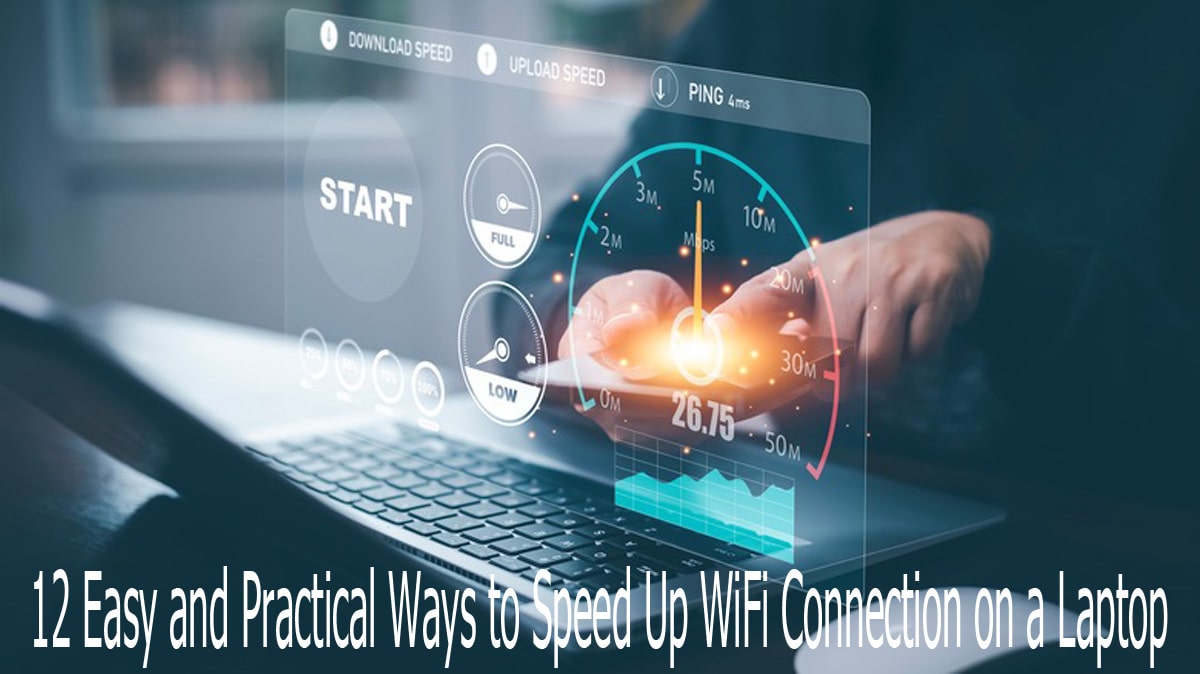
A slow WiFi connection can be a major obstacle in daily activities—from working and studying to entertainment. Fortunately, there are many simple steps you can take to improve your laptop’s WiFi speed without spending much money or calling a technician. Here are 12 practical ways you can try at home.
1. Check Your Internet Speed
The first step is to ensure your internet connection matches the package you subscribed to. Use a service like Speedtest.net to measure your speed. If the result is far below the promised speed, it may indicate an issue with the provider or too many devices connected at once.
2. Close Bandwidth-Hungry Applications
Some applications like cloud software, online games, or auto-downloads can silently consume large amounts of bandwidth. Use Task Manager to close unnecessary apps so your internet connection focuses on what matters.
3. Reposition the Router
Your router’s signal may be weakened if it is placed behind walls or in an obscure location. Position it in an open, elevated area—like the center of your home or on a shelf—so the signal can distribute evenly.
4. Move Your Laptop Closer to the Router
The farther your laptop is from the router, the weaker the signal it receives. Try to position your laptop closer to the router, especially when doing activities that require stable connections such as video conferencing or HD streaming.
5. Use a 5 GHz WiFi Network
Try connecting to the 5 GHz network if your router is capable of supporting dual-band frequencies. It offers faster and more stable speeds compared to 2.4 GHz, especially in environments crowded with neighboring WiFi signals.
6. Change the WiFi Channel
Overlapping WiFi signals can cause interference. Use a WiFi analyzer app to detect the least crowded channel, then adjust your router settings to avoid clashing with nearby networks.
7. Clear Browser Cache and Update Regularly
A cluttered browser can store junk files that slow down your browsing. Regularly clear your cache, cookies, and history. Use the most recent version of your browser for optimal performance.
8. Update Your Laptop’s WiFi Driver
Outdated drivers can affect connectivity. Check and update your WiFi driver through Device Manager or your laptop manufacturer’s official website.
9. Use a LAN Cable When Possible
For faster and more stable connections, consider using a LAN (Ethernet) cable to connect directly to the router—especially for important tasks like uploading work documents or attending virtual meetings.
10. Change Your DNS
Default DNS from your provider can be slow. To speed up website lookups, think about moving to public DNS services like Cloudflare (1.1.1.1) or Google DNS (8.8.8.8 and 8.8.4.4).
11. Limit the Number of Connected Devices
Your bandwidth is divided more when there are more devices on your network.Disconnect devices that are not in use to give your laptop more bandwidth allocation.
12. Restart Your Router and Laptop Regularly
Restarting your router and laptop periodically can help refresh the system and the connection. It’s a simple yet effective way to fix sudden slowdowns.
Conclusion
A slow WiFi connection doesn’t always mean you need new hardware or a higher-tier internet package. By following the practical tips above, you can improve your laptop’s WiFi speed easily and at no extra cost. Try each step, and feel the difference.




